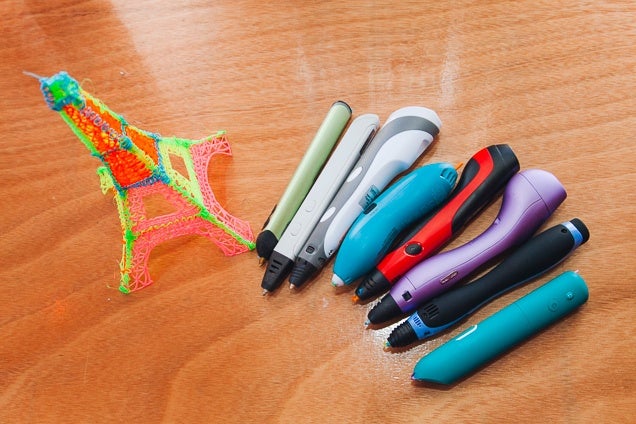Exploring the Creative Frontier: A Comprehensive Guide to the Best 3D Pens for Model and Design Enthusiasts

Introduction:
In the ever-expanding realm of artistic expression, 3D pens have emerged as powerful tools that bridge the gap between imagination and reality. These innovative devices enable users to bring their ideas to life in three-dimensional space, turning sketches into tangible creations. As the popularity of 3D printing and modeling continues to soar, the market is replete with a plethora of 3D pens. In this extensive guide, we will delve into the world of 3D pens, exploring the key features, technical specifications, and top recommendations to empower modelers and designers in their pursuit of three-dimensional creativity.
Understanding the World of 3D Pens:
- How 3D Pens Work: 3D pens operate on the same principle as 3D printers, extruding heated plastic filament that quickly cools and solidifies, allowing users to draw and build up layers. The pens are versatile tools that cater to artists, designers, hobbyists, and even educators seeking to explore the possibilities of three-dimensional creation without the complexity of a full-fledged 3D printer.
- Materials Used: The most common filament used in 3D pens is PLA (Polylactic Acid) due to its low melting point, ease of use, and environmental friendliness. Other materials like ABS (Acrylonitrile Butadiene Styrene) and PETG (Polyethylene Terephthalate Glycol) are also utilized, each offering unique properties such as flexibility, durability, and transparency.
Key Considerations:
- Temperature Control: Adjustable temperature settings are crucial for working with different filament materials. A 3D pen with precise temperature control allows users to experiment with various filaments, expanding the range of creative possibilities.
- Speed Settings: Variable speed settings enable users to control the rate at which the filament is extruded. This feature is essential for intricate details and precise control over the 3D drawing process. A well-designed pen should offer a range of speed options to cater to different projects.
- Filament Compatibility: The best 3D pens support a variety of filament materials and diameters, providing users with the flexibility to experiment and choose the most suitable material for their projects. Look for pens that are compatible with both standard 1.75mm and thicker 2.85mm filaments.
- Ease of Use and Ergonomics: An ergonomic design ensures comfortable handling during extended use. Consider the weight, grip, and button placement of the 3D pen to ensure a user-friendly experience. An intuitive control interface further enhances ease of use.
- Display and Controls: A clear display and easy-to-navigate controls contribute to a seamless user experience. Information such as temperature, speed, and filament type should be easily accessible, allowing users to make quick adjustments while working on their creations.
Top 3D Pen Recommendations:
- 3Doodler Create+ (2022 Edition): Renowned for pioneering the 3D pen market, the 3Doodler Create+ offers a sleek design, precise temperature control, and compatibility with various filament materials. Its intuitive controls and easy filament loading make it an excellent choice for both beginners and experienced users.
- Creality 3D Printing Pen CP-01: From the creators of popular 3D printers, Creality’s CP-01 3D Printing Pen combines versatility with ergonomic design. Featuring adjustable temperature and speed settings, it supports both PLA and ABS filaments, catering to a wide range of creative projects.
- MYNT3D Professional Printing 3D Pen: The MYNT3D Professional Printing 3D Pen stands out for its fine-tuned temperature control and adjustable speed settings. With a lightweight design and easy-to-use controls, it provides a seamless experience for artists and designers alike.
- XYZprinting da Vinci 3D Pen Cool: XYZprinting, known for its 3D printers, offers the da Vinci 3D Pen Cool with a unique feature—cooling technology. This pen cools down the filament quickly, allowing for instant solidification and providing greater control over the creative process.
- Anycubic 3D Printing Pen V2: Anycubic’s 3D Printing Pen V2 features a compact design with adjustable temperature and speed settings. With its intuitive controls and compatibility with various filaments, it caters to users seeking a reliable and versatile 3D pen.
Conclusion:
The world of 3D pens opens up a realm of possibilities for modelers, designers, and enthusiasts to unleash their creativity in three-dimensional space. The recommendations provided, along with the key considerations outlined, serve as a comprehensive guide for selecting the best 3D pen based on individual preferences and project requirements. Whether sketching intricate designs, creating prototypes, or simply enjoying the joy of sculpting in 3D, the right 3D pen can transform artistic visions into tangible realities. As these innovative tools continue to evolve, the horizon of creative expression expands, inviting individuals of all skill levels to embark on a journey of boundless imagination and artistic exploration.







